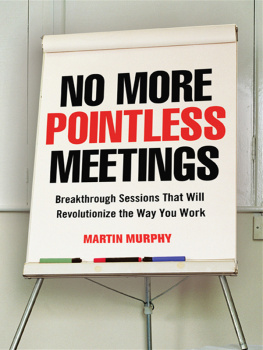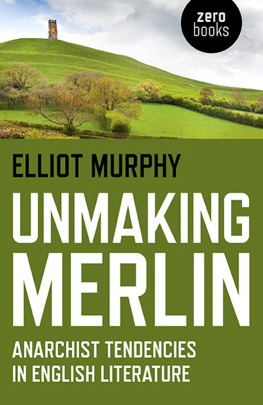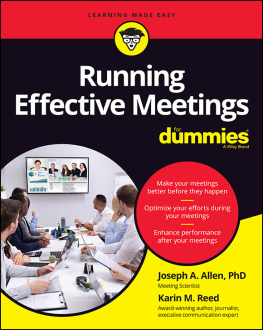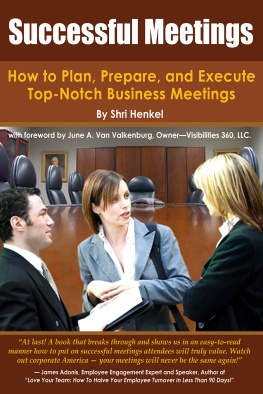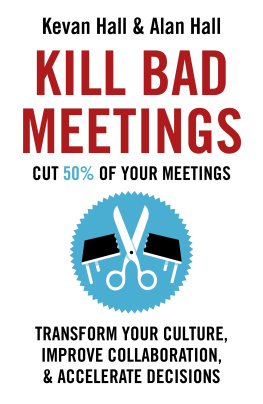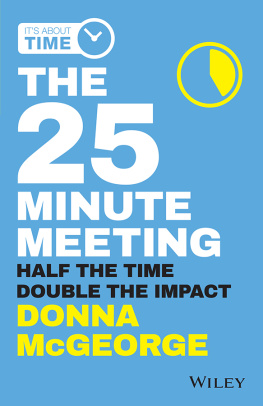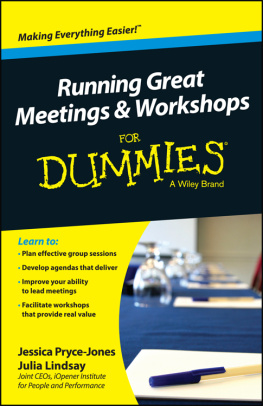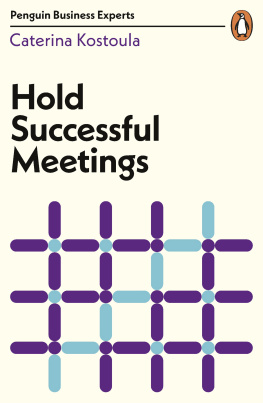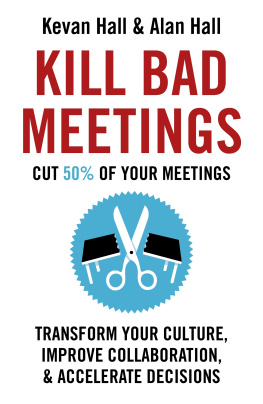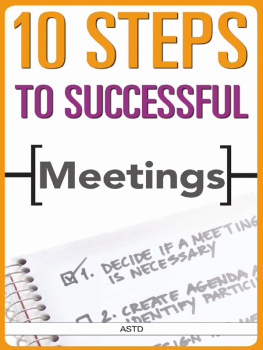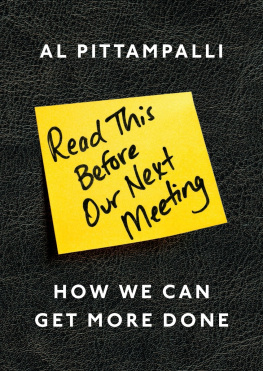
NO MORE POINTLESS MEETINGS
NO MORE POINTLESS MEETINGS
Breakthrough Sessions That Will Revolutionize the Way You Work
MARTIN MURPHY

American Management Association
New York Atlanta Brussels Chicago Mexico City San Francisco
Shanghai Tokyo Toronto Washington, D.C.
Bulk discounts available. For details visit:
www.amacombooks.org/go/specialsales
Or contact special sales:
Phone: 800-250-5308
Email:
View all the AMACOM titles at: www.amacombooks.org
This publication is designed to provide accurate and authoritative information in regard to the subject matter covered. It is sold with the understanding that the publisher is not engaged in rendering legal, accounting, or other professional service. If legal advice or other expert assistance is required, the services of a competent professional person should be sought.
Library of Congress Cataloging-in-Publication Data
Murphy, Martin, 1942
No more pointless meetings : breakthrough sessions that will revolutionize the way you work / Martin Murphy.
p. cm.
Includes index.
ISBN 978-0-8144-3168-9 (pbk.) ISBN 0-8144-3168-2 (pbk.)
1. Business meetings. 2. Organizational effectiveness. I. Title.
HF5734.5.M87 2013
658.4'56dc23 2012025180
2013 Martin Murphy
All rights reserved.
Printed in the United States of America.
This publication may not be reproduced, stored in a retrieval system, or transmitted in whole or in part, in any form or by any means, electronic, mechanical, photocopying, recording, or otherwise, without the prior written permission of AMACOM, a division of American Management Association, 1601 Broadway, New York, NY 10019.
The scanning, uploading, or distribution of this book via the Internet or any other means without the express permission of the publisher is illegal and punishable by law. Please purchase only authorized electronic editions of this work and do not participate in or encourage piracy of copyrighted materials, electronically or otherwise. Your support of the authors rights is appreciated.
About AMA
American Management Association (www.amanet.org) is a world leader in talent development, advancing the skills of individuals to drive business success. Our mission is to support the goals of individuals and organizations through a complete range of products and services, including classroom and virtual seminars, webcasts, webinars, podcasts, conferences, corporate and government solutions, business books, and research. AMAs approach to improving performance combines experiential learninglearning through doingwith opportunities for ongoing professional growth at every step of ones career journey.
Printing number
10 9 8 7 6 5 4 3 2 1
for Linda Clare
CONTENTS
Chapter 1
___________
WHY MEETINGS FAIL: REFRAMING WORKFLOW MANAGEMENT
T his book will convince you that in the digital age, conventional meetings are obsolete, and when compared to advances in other areas of organizational management, the current art of human collaboration seems archaic. It neednt be.
I can walk into any conference room cold, without any prior knowledge of the organization or the meeting that is about to begin, and lead it in a manner that gets more done in a shorter period of time than anyone in the room has ever experienced. The get-together can be with the board of directors, top executives, departmental managers, supervisors, team leaders, or any mix of people and disciplines; it doesnt matter: I get superior results every time I facilitate a collaborative eventbecause I dont use meetings for collaboration.
At its most elemental, this book is intended to provide managers and supervisors who currently conduct meetings with a transformative alternative they can use immediately to get more done in less time. In addition, it provides them with workflow management tools to access and leverage the cognitive and creative capabilities of the individuals who report to them in a manner that creates value for employees, consumers, and stakeholders.
Meetings have survived as the primary collaborative process because it is assumed that an individual, once promoted to a leadership position, already knows how to effectively leverage human capital. The facts dont support thisall of us still get trapped in meetings that squander time well never recover. While the number and complexity of issues that require resolution accelerates, unsatisfactory meeting outcomes are still an everyday event. Before we get into detailed instruction for the workflow management protocols youre about to be introduced to, it will help to take a look at how we currently collaborate within organizations.
For most executives, managers, and supervisors, the meeting is the only work management tool theyve ever used for collaboration. The drill is ingrained: Everyone gathers in a conference room, and the most senior executive both conducts and participates in the meeting at the same time. This wasteful collaborative ritual takes place millions of times daily in organizations around the globe. And, while its shortcomings are acknowledged, it has been the principal means for collaboration over the course of many generations.
Granted, we now have distance conferencing capabilities, but digital conferencing platforms are basically delivery vehiclestheir ultimate effectiveness as a collaborative tool is dependent upon users having the ability to leverage the intellectual and creative potential of the individuals participating in the dialogue.
If managers are doing a poor job of collaborating in person-to-person gatheringsand be assured that they aredigital collaborative performance will be even less effective. Right now, this reality is overshadowed by excitement over the diversity of impressive delivery vehicles and platforms for distance conferencing. That excitement will prove hollow unless we also upgrade the human element of the collaborative equation.
GUIDING PRINCIPLES
Reframing workflow management activities into four broad categories of need transforms the effectiveness of workflow management in general and collaboration in particular. Those categoriesthe need to manage issues, to solve problems, to innovate, and to planyielded the following collaborative elements of a workflow management system (see ):
1. The Issues Management Session
2. The Innovation Session
3. The Problem-Solving Session
4. Ongoing Planning
The fourth element, Ongoing Planning, provides the means to capitalize on exponential change by building speed-to-market capabilities.
In the next four chapters, well explore processes for conducting Issues Management, Innovation, and Problem-Solving sessions and introduce an Ongoing Planning structure. There are, however, two principles on which all of these sessions are based:

Figure 1.1 Workflow management system.
1. Content and process must be kept separate.
2. The boss (or the highest-ranking person in the room) should not run workflow management sessions.
Separate Content and Process
While theres little doubt about the need to upgrade the quality of workplace collaboration, how to do so can be a challenge. Im going to tell you how to get it done quickly and in a manner thats least disruptive to everyday workflow management. Well begin with the core elements of all interpersonal communications: content and process. Content refers to
Next page
